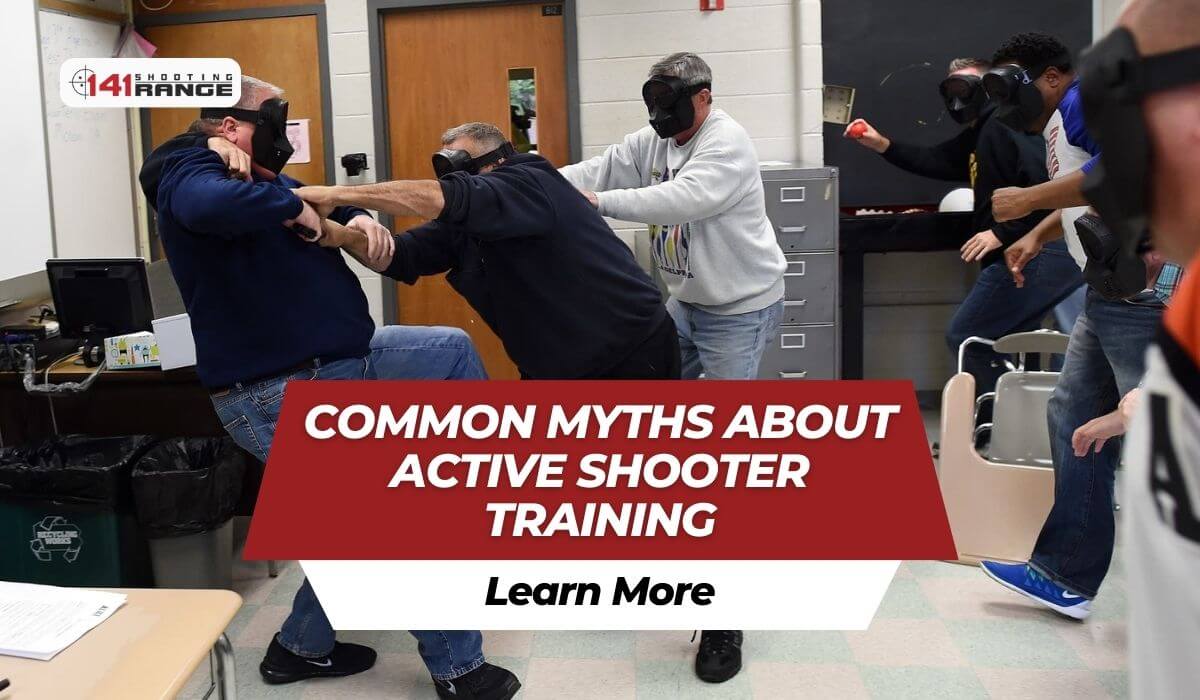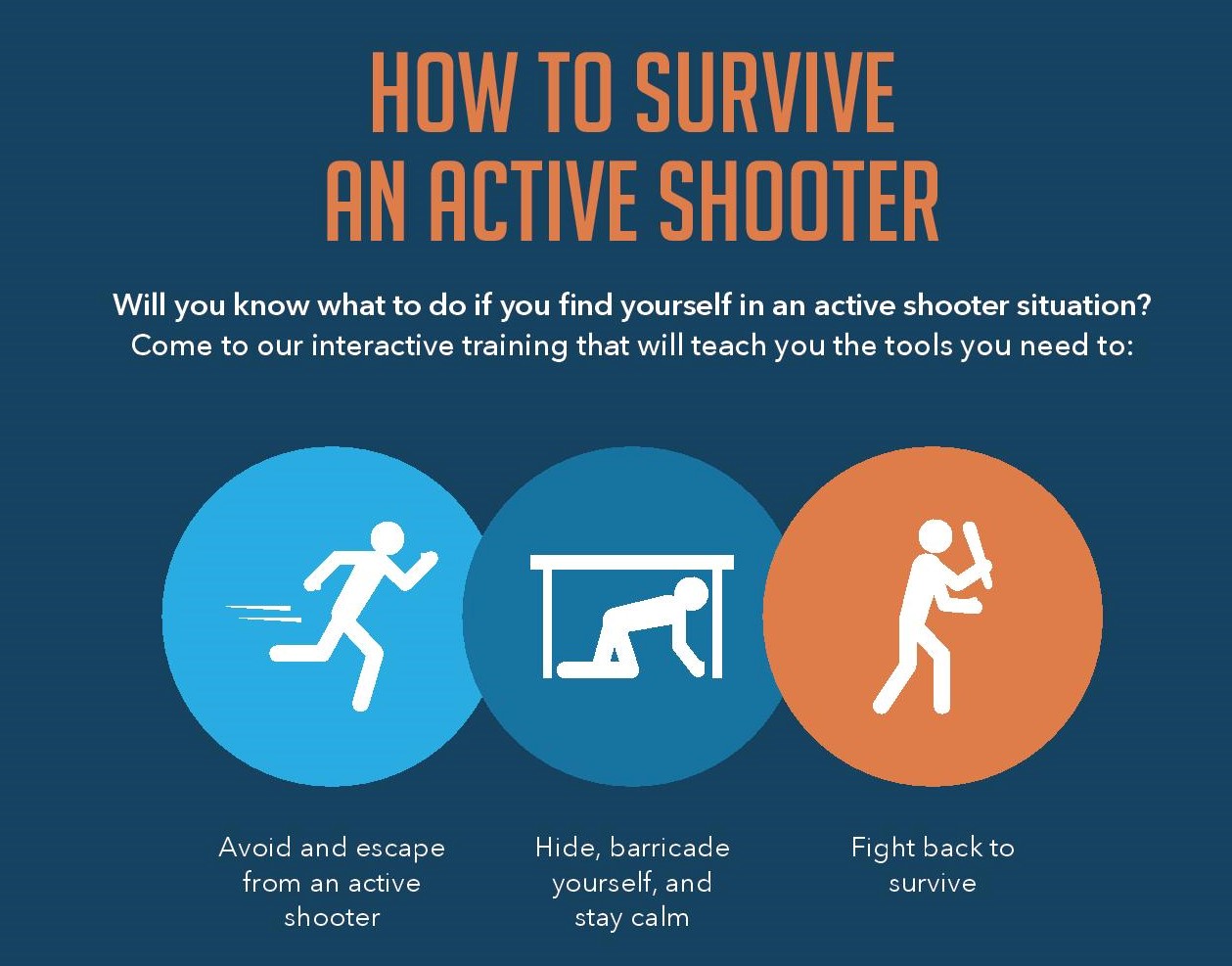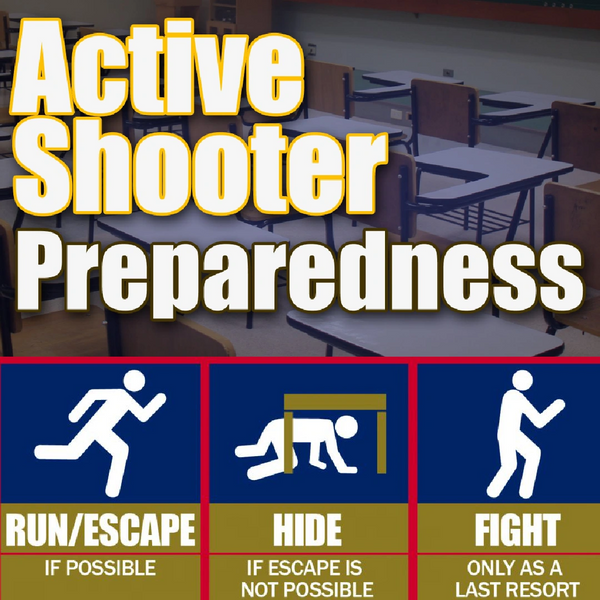How Active Shooter Training Can Conserve Lives in Situation Situations
How Active Shooter Training Can Conserve Lives in Situation Situations
Blog Article
Executing Active Shooter Training: Best Practices for Creating a Safe and Prepared Neighborhood Environment
As neighborhoods challenge the distressing reality of active shooter incidents, the implementation of detailed training programs becomes essential. What are the crucial elements that can change a typical training program into a durable design for community resilience?

Understanding the Need for Educating
In an age noted by boosting incidents of violence in public rooms, comprehending the demand for active shooter training has never ever been much more essential. Detailed training efforts can outfit individuals with the knowledge and abilities to react decisively.
Furthermore, the emotional impact of violence on people and communities can not be overstated. Training cultivates a sense of empowerment and readiness, allowing people to feel more safe and secure in their environments. It also promotes a culture of security, where recognition and vigilance end up being essential components of life. The advantages of energetic shooter training expand beyond prompt action; they include enhancing interaction procedures and improving general precaution within companies.
Trick Elements of Effective Programs
Effective active shooter training programs integrate several crucial parts that enhance readiness and feedback capabilities. First, thorough educational program development is necessary, making sure that training material matters, evidence-based, and tailored to the particular needs of the company or area. This includes recognizing the characteristics of active shooter events and the emotional impact on individuals entailed.
2nd, practical training situations must be used to simulate prospective situations, permitting individuals to practice decision-making and action techniques in a regulated atmosphere. These drills assist in muscular tissue memory and construct self-confidence amongst participants.
Third, a concentrate on interaction protocols is vital. Establishing clear lines of interaction among police, emergency -responders, and individuals makes certain worked with responses throughout an incident. Regular updates and correspondence course aid maintain interaction paths clear and efficient.
4th, continuous analysis and comments devices must be integrated into the training program - active shooter training. Analyzing the performance of training through individual responses and efficiency metrics allows for constant improvement
Lastly, promoting a society of safety and preparedness within the area encourages caution and positive actions, guaranteeing that people are not just experienced however additionally participated in maintaining a secure environment.
Engaging Community Stakeholders

To successfully involve these stakeholders, it is necessary to connect the goals and advantages of the training. Organizing informational sessions can aid make clear the training's purpose, address concerns, and detail the functions each stakeholder may play. Additionally, creating a stakeholder consultatory board can help with ongoing discussion, enabling diverse perspectives and understandings to be incorporated into the training program.
Structure relationships with area leaders and companies is additionally essential. Their support can enhance outreach initiatives, increase engagement, and make sure that training is customized to the one-of-a-kind needs of the community. Furthermore, stakeholders can help in distributing details and sources, enhancing the message of safety and security and preparedness.
Ultimately, involving area stakeholders not just enhances the training initiative but also cultivates a feeling of ownership amongst residents, resulting in a much more durable and informed area with the ability of responding effectively to possible hazards.
Training Distribution Approaches
Making use of a selection of training shipment approaches is necessary to suit the diverse discovering designs and requirements of participants in active shooter training programs (active shooter training). Efficient training can take several types, including lectures, hands-on simulations, on-line modules, and interactive workshops. Each approach offers an unique purpose and can improve the overall understanding experience

On the internet modules supply flexibility and ease of access, making it possible for participants to find out at their very own pace. These can include video clips, tests, and conversations to assess understanding. Interactive workshops urge seminar and analytic, advertising teamwork and interaction skills.
Including a mixed strategy that combines these techniques not only improves the training experience yet also makes certain that individuals are better prepared to react successfully in the event of an energetic shooter circumstance (active shooter training). By attending to various learning preferences, companies can produce a more informed and receptive neighborhood
Continuous Assessment and Improvement
Routine evaluation and improvement of energetic shooter training programs are critical to keeping their relevance and efficiency. As hazards progress, so should the methods and approaches utilized in training. Continual evaluation makes sure that training web content mirrors the most up to date intelligence on active shooter incidents, incorporating lessons learned from recent events and readjusting for emerging patterns.
To promote this procedure, organizations need to establish responses mechanisms that consist of participant examinations, expert reviews, and case debriefs. Accumulating information on individual efficiency during drills and exercises is important, as it highlights locations needing renovation and informs future training sessions. like this Furthermore, involving with regulation enforcement and emergency -responders can provide valuable understandings into the functionality and applicability of training protocols.
Frequently set up testimonials of more tips here training products and methods must be mandated, cultivating a setting of development and flexibility. Organizations should additionally motivate a culture of ongoing knowing, where personnel feel encouraged to suggest modifications based upon their experiences. By devoting to continual examination and renovation, organizations not only enhance the effectiveness of their energetic shooter training programs however also strengthen their total commitment to security and preparedness within the neighborhood.
Verdict
Finally, effective implementation of energetic shooter training demands a thorough strategy that prioritizes neighborhood engagement and sensible simulations. By establishing tailored curricula, incorporating diverse training techniques, and cultivating cooperation amongst stakeholders, communities can enhance readiness. Continual assessment and feedback mechanisms are important for adjusting programs to emerging dangers, thereby reinforcing general safety and security. Ultimately, a dedication to continuous training and renovation grows a culture of alertness and readiness, making sure a safer setting for all community members.
Report this page